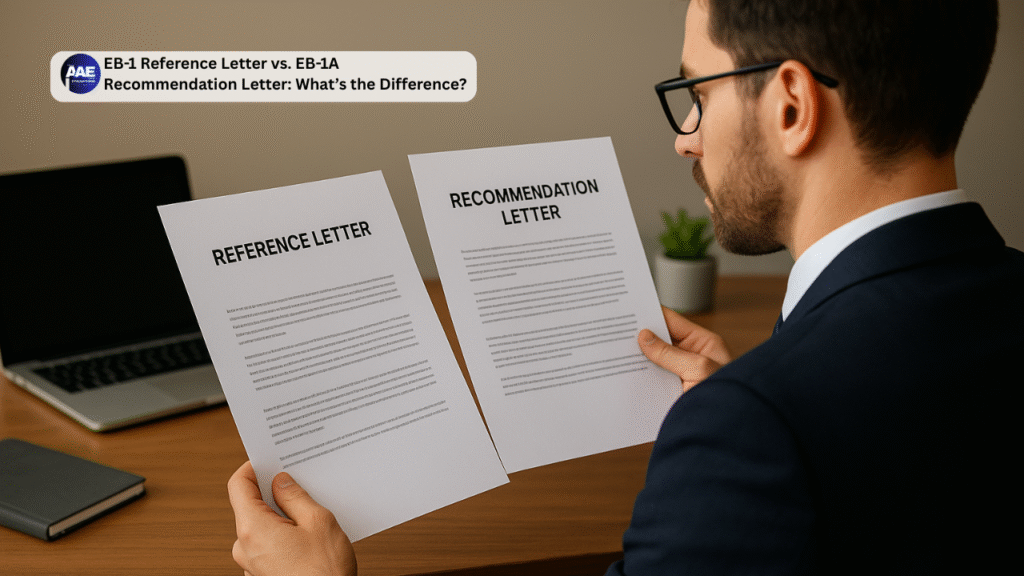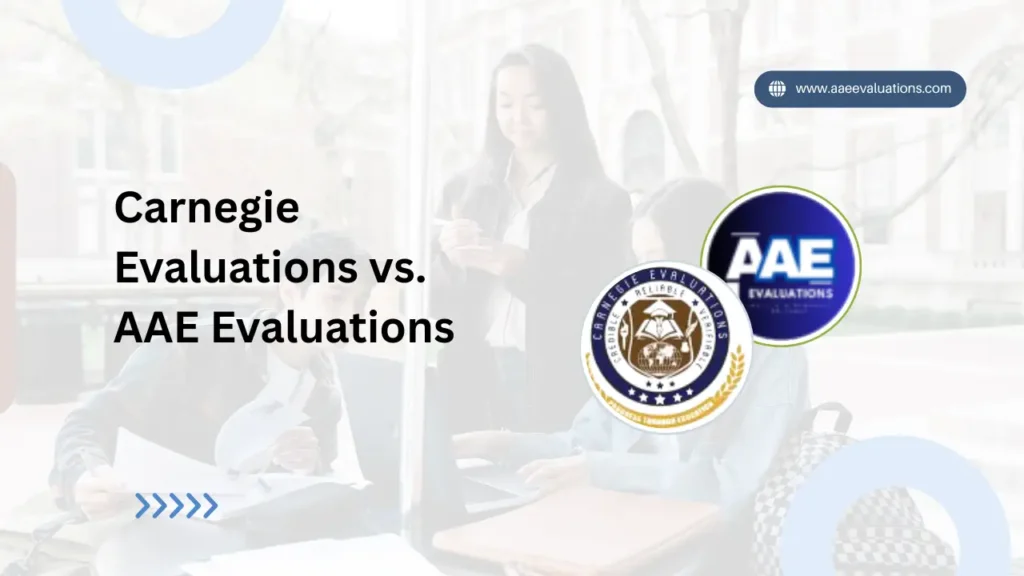Key Differences Between the EB-1 Reference Letter and EB-1A Recommendation Letter
The EB-1 Reference Letter and the EB-1A Recommendation Letter are two critical components of the EB-1 visa application process. For foreign professionals, researchers, scientists, and artists aiming to secure a U.S. Green Card under the EB-1 category, these letters serve as vital evidence to demonstrate their extraordinary abilities or exceptional accomplishments.
However, despite being used interchangeably by many applicants, these two documents are not the same. Each serves a distinct purpose, carries a different tone, and targets a unique audience within the immigration process. Understanding these differences can make or break your EB-1 petition.
Before diving deeper into the key distinctions, it’s essential to understand the EB-1 visa itself and how these letters fit into the overall application strategy.
What Is the EB-1 Visa Category?
The EB-1 (Employment-Based First Preference) visa category is reserved for individuals who possess extraordinary abilities in their respective fields, such as science, education, business, athletics, or the arts. It also applies to outstanding professors and researchers and certain multinational executives or managers.
The EB-1A (Extraordinary Ability) subcategory is unique because it allows individuals to self-petition, meaning they do not need a U.S. employer to sponsor them. Instead, applicants must prove that they have achieved a level of expertise and recognition placing them among the top in their field.
This is where reference letters, recommendation letters, and Expert Opinion Letters become essential. These documents provide evidence of the applicant’s credibility, professional achievements, and influence in their domain.
What Is an EB-1 Reference Letter?
An EB-1 Reference Letter is typically written by colleagues, supervisors, collaborators, or industry peers who can directly attest to the applicant’s contributions and impact. This letter supports the applicant’s qualifications by referencing tangible work results, research influence, or achievements recognized within the field.
Purpose and Focus
- Provides factual evidence of the applicant’s professional history.
- Highlights specific projects, research, or innovations.
- Reinforces credibility through personal or professional association.
In short, the EB-1 Reference Letter acts as a testimonial from individuals who have directly witnessed the applicant’s exceptional skills or accomplishments.
What Is an EB-1A Recommendation Letter?
An EB-1A Recommendation Letter, on the other hand, serves a broader, more evaluative role. It’s often written by recognized experts or authorities—sometimes even those who have not personally worked with the applicant but can objectively assess their reputation and influence in the field.
Purpose and Focus
- Offers an independent evaluation of the applicant’s global reputation.
- Highlights how the applicant’s work influences others in the industry.
- Provides an objective endorsement from leading professionals.
In short, while a reference letter validates what the applicant has done, a recommendation letter establishes why those achievements matter in a broader context.
Comparison Table: EB-1 Reference Letter vs. EB-1A Recommendation Letter
| Aspect | EB-1 Reference Letter | EB-1A Recommendation Letter |
| Author | Colleagues, supervisors, or collaborators who know the applicant personally | Independent experts or authorities in the same or related field |
| Relationship to Applicant | Direct or professional working relationship | May or may not have a direct connection |
| Purpose | Validate achievements and skills through firsthand experience | Endorse global impact and professional reputation |
| Tone | Detailed and factual | Evaluative and persuasive |
| Focus | Specific accomplishments and contributions | Overall recognition and influence in the field |
| Ideal For | EB-1A, EB-1B, and EB-1C cases | Primarily EB-1A petitions |
| USCIS Perspective | Confirms legitimacy of claimed achievements | Confirms extraordinary ability and recognition by peers |
This comparison helps applicants and attorneys structure their EB-1 petitions strategically, ensuring that each letter serves a clear and unique function.
Why Are EXPERT OPINION LETTERS Important for EB-1 Petitions?
Beyond reference and recommendation letters, EXPERT OPINION LETTERS play a vital role in reinforcing the technical and professional credibility of an applicant’s claims. These letters are written by qualified experts with deep knowledge of the field, capable of interpreting complex achievements into language that immigration officers can understand.
Key Benefits of EXPERT OPINION LETTERS
- Translate technical expertise into professional evaluation for USCIS.
- Strengthen the narrative of extraordinary ability.
- Offer a neutral, authoritative endorsement of the applicant’s contributions.
- Increase the overall persuasiveness of the EB-1 petition.
In essence, expert opinion letters bridge the gap between technical complexity and immigration evaluation, making them a crucial part of a well-prepared petition.
How to Write a Strong EB-1 Reference Letter
Writing a compelling EB-1 Reference Letter requires balancing professional detail with credibility. The letter should demonstrate the applicant’s exceptional skills, international recognition, and measurable impact.
Essential Elements:
- Introduction – Identify the writer, their position, and their relationship with the applicant.
- Professional Credibility – Establish the writer’s qualifications and authority in the field.
- Specific Contributions – Cite projects, research outcomes, or professional achievements.
- Impact Metrics – Quantify citations, awards, or results that prove influence.
- Conclusion – Affirm confidence in the applicant’s extraordinary ability and eligibility.
Avoid vague statements. USCIS values letters that provide verifiable facts and quantifiable impact over generic praise.
How to Draft an Effective EB-1A Recommendation Letter
The EB-1A Recommendation Letter focuses on an applicant’s broader impact and reputation. It’s less about firsthand experience and more about professional influence.
Essential Elements:
- Author Credentials – The recommender should be an established authority in the field.
- Professional Assessment – Describe how the applicant’s work stands out internationally.
- Evidence of Recognition – Cite examples like publications, citations, conference invitations, or awards.
- Industry Impact – Explain how the applicant’s contributions influence current research or practices.
- Final Endorsement – Conclude with a strong statement confirming that the applicant ranks among the top professionals in the field.
This letter should read as an objective evaluation, written by someone capable of assessing the applicant’s work without bias.
Common Mistakes to Avoid
- Using generic templates without personalization.
- Submitting multiple letters that repeat the same information.
- Choosing recommenders with insufficient credentials.
- Ignoring USCIS evidentiary standards.
- Lacking quantifiable proof of accomplishments.
Every letter submitted should add new value and perspective to your EB-1 application. Quality and authenticity matter far more than quantity.
How AAE Evaluation Supports EB-1 Applicants
When it comes to preparing a successful EB-1 petition, precision and credibility are everything. That’s where AAE Evaluation comes in.
AAE Evaluation specializes in providing EXPERT OPINION LETTERS and credential evaluation services that strengthen your immigration case. Their team of certified evaluators and domain experts ensures that your qualifications, experience, and professional achievements are clearly understood by USCIS officers.
Why Choose AAE Evaluation:
- Expert reviewers with deep domain knowledge.
- Accurate and USCIS-compliant evaluations.
- Personalized attention to every applicant’s background.
- Fast turnaround and detailed documentation support.
Whether you need an expert opinion letter for your EB-1A petition or a credential evaluation for other visa categories, AAE Evaluation ensures that every document reflects the highest standards of accuracy and professionalism.
Frequently Asked Questions (FAQs)
1. Are EB-1 Reference Letters and EB-1A Recommendation Letters mandatory?
While not strictly mandatory, these letters are strongly recommended because they provide the qualitative evidence USCIS expects for EB-1 petitions.
2. Who should write an EB-1 Reference Letter?
Ideally, colleagues, supervisors, or collaborators who have directly worked with you and can verify your accomplishments should write it.
3. Can I have both types of letters in my EB-1A petition?
Yes. Having both reference and recommendation letters enhances your case by providing complementary perspectives — firsthand validation and independent recognition.
4. How many letters should I include in my EB-1 petition?
Most successful petitions include 5–7 well-crafted letters, each focusing on different aspects of the applicant’s achievements.
5. What makes an EXPERT OPINION LETTER different?
An EXPERT OPINION LETTER is written by a recognized specialist who can objectively analyze and explain your professional accomplishments for immigration officers.
6. How can AAE Evaluation assist with my EB-1 petition?
AAE Evaluation can provide expert opinion letters, credential evaluations, and guidance to ensure your documentation aligns with USCIS expectations, improving your chances of approval.
Conclusion
The EB-1 Reference Letter and EB-1A Recommendation Letter may seem similar, but they play distinct roles in your immigration journey. While reference letters validate your achievements through direct experience, recommendation letters affirm your global reputation through objective recognition.
Combined with EXPERT OPINION LETTERS from trusted professionals like AAE Evaluation, these documents form a powerful narrative that demonstrates your extraordinary ability, leadership, and influence in your field.
In a highly competitive EB-1 process, strong letters don’t just support your case — they define it.



